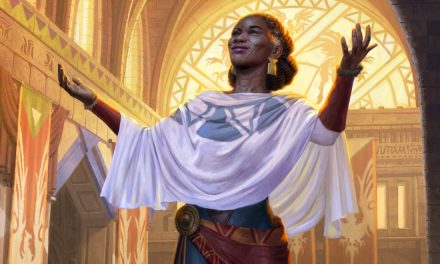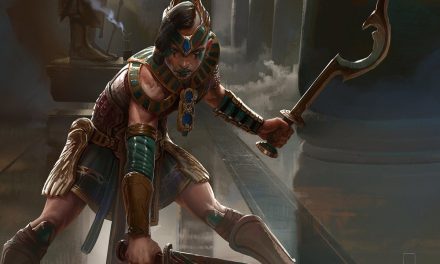Imagine yourself as a powerful Conjuration Wizard, capable of bending reality to your will and summoning creatures from other planes of existence.
Or perhaps summoning objects out of thin air to aid in your exploration.
What about even transporting yourself or others instantaneously across the battlefield or to another plane of existence?
As a Conjuration Wizard, your ability to summon creatures and create nonmagical objects sets you apart from other classes. With each spell cast, you bring forth allies or unleash devastating battlefield logistics against your enemies.
If summoning allies, teleportation, and battlefield control are what you want in a Wizard, this guide is for you!
This is the full guide to the Conjuration Wizard in D&D 5e!
What is the Conjuration Wizard in D&D 5e?
Conjuration Wizards are mainly known for their summoning spells and abilities.
However, Conjurers have also mastered the art of teleportation, allowing them and their allies to move swiftly across vast distances.
Conjurers can create “pocket dimensions” to store items or even transport themselves and their companions to different planes of existence.
If you’re fascinated by the use of summon spells and teleportation magic and yearn for a class that offers versatility, imagination, and strategic opportunities, look no further than the Conjuration Wizard!
But the Conjuration Wizard is much more than just simply “making things appear out of nowhere.”
When comparing the spellcasting capabilities of Conjuration Wizards to other Wizard subclasses, they certainly hold their own in terms of overall effectiveness.
While some Wizard subclasses specialize in specific areas such as Evocation for raw damage output or Divination for enhanced foresight, Conjurers offer a well-rounded approach that combines offense, defense, and utility.
Imagine a Swiss army knife wizard only limited by a resourceful player’s imagination.
In the right hands, being able to magically summon the exact object that you need for a situation can be game-changing!
These Wizards can summon creatures like elementals or celestial beings to fight on their behalf or heal them. This provides a ton of additional firepower, benefits, and distractions as necessary.
Ultimately, this flexibility allows Conjuration Wizards to easily adapt to a wider range of encounters and challenges.
The Conjuration Wizard is one of eight Wizard subclasses that appear in the 5e Player’s Handbook.
Role in the Party
Conjuration Wizards’ role largely fits into 3 categories: summoning, mobility, and battlefield control.
This subclass offers unique features and spells that allow you to summon and control creatures and the battlefield. This makes you very valuable to your party both in and out of battle.
Whether it’s calling forth an army of loyal critters or summoning powerful elemental beings, your ability to summon these creatures can turn the tide of any encounter.
With these spells, you can quickly bolster your party’s offensive capabilities. Whether it be summoning a pack of wolves to flank enemies or calling forth an Earth Elemental to protect your allies with its immense strength.
Note that these summoned creatures not only provide additional damage output but also serve as distractions.
They’re great for drawing attention away from yourself and your party!
By effectively “recruiting” for the battlefield and exploration, you can create advantageous situations for your party and give them the upper hand in both non-combat and combat situations.
Of course, add in a healthy dose of teleportation magic and you become an indispensable asset to any party!
A successful and long-lived Conjurer understands that spell selection is crucial for achieving victory on the battlefield.
While other wizards may focus on dealing direct damage with fireballs or lightning bolts, Conjurers prioritize spells that offer more logistical and imaginative advantages such as teleportation spells.
These teleportation spells and your Benign Transposition feature are important for enabling you and your allies to quickly traverse obstacles, overcome foes, or escape dangerous situations. This mobility can be massively impactful, allowing your party to outmaneuver enemies and gain the upper hand.
However, we can’t forget the potential of Conjuration magic to help control the battlefield!
Conjurers really excel at creating advantageous situations for their allies.
Spells like Web or Wall of Force can hinder enemy movement and restrict their options. That then makes it easier for your team to control the flow of battle which is a huge advantage.
By strategically placing these spells and some well-thought-out teleportation, you can dictate where enemies can go and limit their effectiveness.
You can then funnel them toward your summoned allies or set them up for more effective area-of-effect spells!
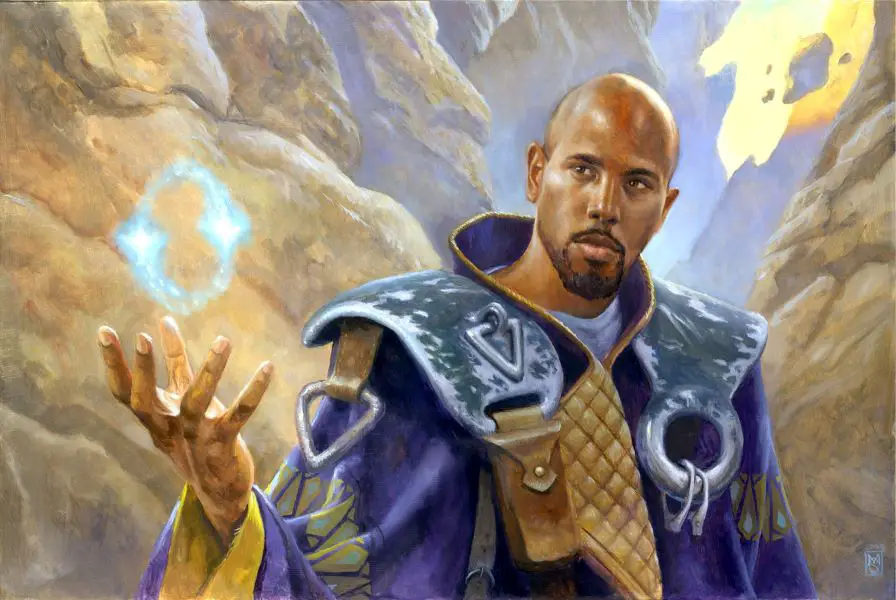
Conjuration Wizard Features 5e
Conjuration Wizards have dedicated their lives to the study of arcane magic but specialize in the school of Conjuration.
Because they have such a deep understanding of this magic and its power, they’re capable of more powerful Conjuration magic than other Wizards.
This is reflected in the Conjuration Wizard’s class features.
Let’s dive in!
You Might Like: The Schools of Magic in D&D 5e Explained
Conjuration Savant (Level 2)
As a specialist in Conjuration magic, you’re more efficient when it comes to adding Conjuration spells to your spellbook.
The gold and time you must spend to copy a Conjuration spell into your spellbook is halved.
As a Wizard, your spellbook is your single most important possession. You will constantly be looking to learn new spells and add them to your precious spellbook.
Of course, this does take time, money, and a bit of luck when you’re looking for specific spells to copy into your book.
Thankfully, the time and gold cost for copying Conjuration spells is cut in half for you!
Note that you’re not only limited to learning Conjuration spells. In fact, it’s still a very good idea to pick up standbys like Fireball or Shield for when combat starts.
I strongly recommend checking out my article that covers using and managing the Wizard’s spellbook in more detail to help you with this. It’s quite literally the most important thing for any Wizard to know.
Minor Conjuration (Level 2)
The Minor Conjuration feature of the Conjuration Wizard in D&D 5e is a deceptively fascinating power. With this feature, these Wizards can create temporary objects out of thin air.
This unique skill opens up a world of possibilities for creative problem-solving, strategic distractions, and on-the-spot tool provision during adventures!
You can use your action to conjure an inanimate object in your hand or on the ground in an unoccupied space that you can see within 10 feet of you.
This object can be no larger than 3 feet on a side and weigh no more than 10 pounds, and its form must be that of a nonmagical object that you have seen.
The object is visibly magical, radiating dim light out to 5 feet.
The object disappears after 1 hour, when you use this feature again, or if it takes or deals any damage.
This is a type of “blank canvas” feature where its usefulness heavily depends on your own creativity and problem-solving abilities.
These objects can be summoned instantly, making them incredibly useful in various scenarios. This feature truly showcases the versatility of the Conjuration Wizard subclass as well as the player’s imagination.
For example, many a character has been trapped in a room with locked or barred exits. By utilizing your Minor Conjuration ability, you could materialize a crowbar or a lockpick to aid your escape.
The potential applications of Minor Conjuration are virtually limitless and only bound by the imagination of the player.
The ability to create these temporary objects from nothing allows Conjuration Wizards to adapt swiftly to almost any situation they encounter!
This versatility proves invaluable in various situations and gives the wizard an edge when problem-solving. Players who love using their imaginations to problem-solve will love Minor Conjuration!
Now, some may argue that this ability has the potential for game-breaking exploits. However, it’s crucial to remember that the DM ultimately decides the boundaries of what can be conjured.
It’s always advisable to discuss potential uses of Minor Conjuration with your Dungeon Master prior to a campaign. You want to do your part to ensure a fair and balanced gameplay experience.
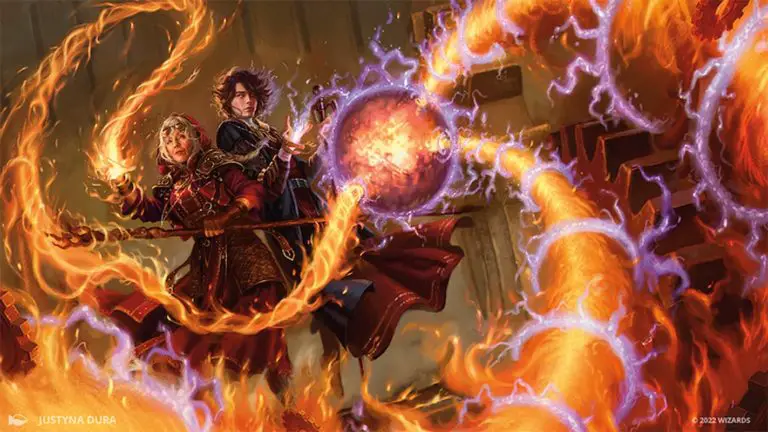
Benign Transposition (Level 6)
The Conjuration Wizard’s 6th level feature, Benign Transposition, is a remarkable addition to their arsenal of magical abilities.
This unique power allows the Conjurer to instantaneously teleport to a specific location or swap places with a willing participant. This magical game of “Switcheroo” can open up an entire world of tactical advantages and strategic possibilities!
You can use your action to teleport up to 30 feet to an unoccupied space that you can see.
Alternatively, you can choose a space within range that is occupied by a Small or Medium creature. If that creature is willing, you both teleport, swapping places.
Once you use this feature, you can’t use it again until you finish a long rest or you cast a conjuration spell of level 1 or higher.
One of the key benefits of Benign Transposition is its ability to reposition wounded allies on the battlefield.
In the heat of combat, it’s not uncommon for a party member to find themselves in a precarious situation. Even cocky tough-guy fighters!
Maybe even especially cocky tough-guy fighters…
With this feature, a Conjuration Wizard can swiftly switch places with an injured comrade. This helps ensure their safety while simultaneously letting the Wizard take their place on the front lines.
This maneuver can turn the tide of battle by providing much-needed relief to struggling allies and allowing them to regroup or seek cover.
Just be sure that you have some defensive spells ready! You need to make sure that you can survive the front lines for a round or two as well!
By swapping places with an ally who is further away from immediate danger, the Conjuration Wizard can effectively remove themselves from harm’s way and provide their companion with an opportunity to retaliate, heal, or retreat.
Examples of Using Benign Transposition
To fully grasp the tactical implications of Benign Transposition, let’s consider some practical scenarios:
Scenario 1 – Getting an Ally to Safety:
A defenseless villager is being threatened by the local Gnome Barbarian bully.
The Conjuration Wizard (hopefully with Shield, Mage Armor, or other defensive spells prepared) uses Benign Transposition to instantly switch places with them. This places themselves at the forefront, where they can cast Burning Hands while giving the villager a chance to escape.
Everyone wins (except the Gnome Barbarian), and the Conjurer is a hero.
Yay!
Scenario 2 – Working Tactically with an Ally:
During an intense battle against a powerful Fire Giant, the Rogue wants to get close enough to use their melee sneak attack ability. However, they’re caught out of range while the Conjurer is in the perfect position.
The quick-thinking Conjuration Wizard can then swap positions with the Rogue. This ensures that they take minimal damage while allowing the courageous Rogue to bury his rapier and dagger into the surprised (and likely confused) giant.
Scenario 3 – Making a Quick Escape:
In the chaos of combat, a Medusa has managed to sneak up on you in the party’s backlines. As her snakes hiss and she prepares to strike, you’ve got one turn to figure out what to do before you are turned into either stone or snake food!
Thankfully, as a Conjuration Wizard, you’re able to make a quick escape with Benign Transposition!
For bonus points, you might even swap places with your friendly Barbarian. Not only has the Medusa’s “easy prey” escaped her, but she now has a raging Barbarian screaming in her face!
Who’s scared now?!

Focused Conjuration (Level 10)
At 10th level, the Conjuration Wizard gains access to an incredible feature known as Focused Conjuration.
This unique feature nullifies the need to make concentration checks to maintain concentration on summoned creatures or spell effects if you take damage.
Considering that one good hit from an enemy can potentially make all of your summons go “poof”, this is a vital and powerful tool, to say the least!
While you are concentrating on a conjuration spell, your concentration can’t be broken as a result of taking damage.
Concentration is crucial in combat situations, especially for spellcasters like the Conjuration Wizard!
It allows them to channel their magical energy into summoning creatures or casting hugely impactful spells that have lasting effects on the encounter.
The Focused Conjuration feature takes this concept to another level by significantly increasing the effectiveness of their school of conjuration spells.
Imagine being able to summon a group of Manes, using the Summon Lesser Demons spell, and not having to worry about breaking concentration due to damage.
As another example, consider a big AOE option like the Cloudkill spell. As a Conjuration Wizard with the Focused Conjuration feature, it’s guaranteed that the spell will last its full 10 minutes if you so choose!
OUCH!
With Focused Conjuration, you have much less to worry about when it comes to preserving your summoned allies and spell effects. This lets you play a bit more aggressively instead of having to worry about a stray arrow potentially causing you to lose your concentration!
Sure, you’ve got several defensive options to help you avoid damage. But having the extra insurance to keep your summoned allies out on the battlefield is incredibly useful!
Recommended: Concentration in D&D 5e Explained!
Durable Summons (Level 14)
By this point, it’s time for your summoned allies to get some buffs of their own. After all, the enemies you’re facing at this tier of the game are much tougher than those you’ve encountered previously!
But have no fear!
At level 14, we finally come to the Conjuration Wizard’s capstone feature: Durable Summons.
Any creature that you summon or create with a conjuration spell has 30 temporary hit points.
Summoning creatures is a core aspect of the Conjurer’s repertoire and is certainly their go-to tactic in combat. With Durable Summons, those summoned allies become WAY more formidable on the battlefield.
Imagine summoning a mighty Elemental to aid you in combat against a dastardly Rakshasa and their swarm of fiendish minions.
With Durable Summons, not only does your Elemental possess its usual big pile of hit points, but it also receives 30 additional temporary hit points that can absorb damage before affecting its true vitality.
This bolstered durability allows your conjured allies to last longer and remain effective throughout encounters.
To put it simply, this feature ensures that your summoned creatures can withstand significant punishment with less need for constant replenishment or re-summoning.
There is nothing bad at all about more efficient spellcasting!
It might be easy to knock the 30 hp as being a comparably small amount, but it adds up quickly.
If you’ve summoned 8 allies to help you, that’s a whopping 240 extra temporary hit points that just got added to your side of the board.
30 extra hp is decent if you’ve only summoned one big ally. But it’s completely unhinged when you focus on summoning larger quantities of buffed-up friends.
Recommended: How Do Temporary Hit Points Work in D&D 5e?
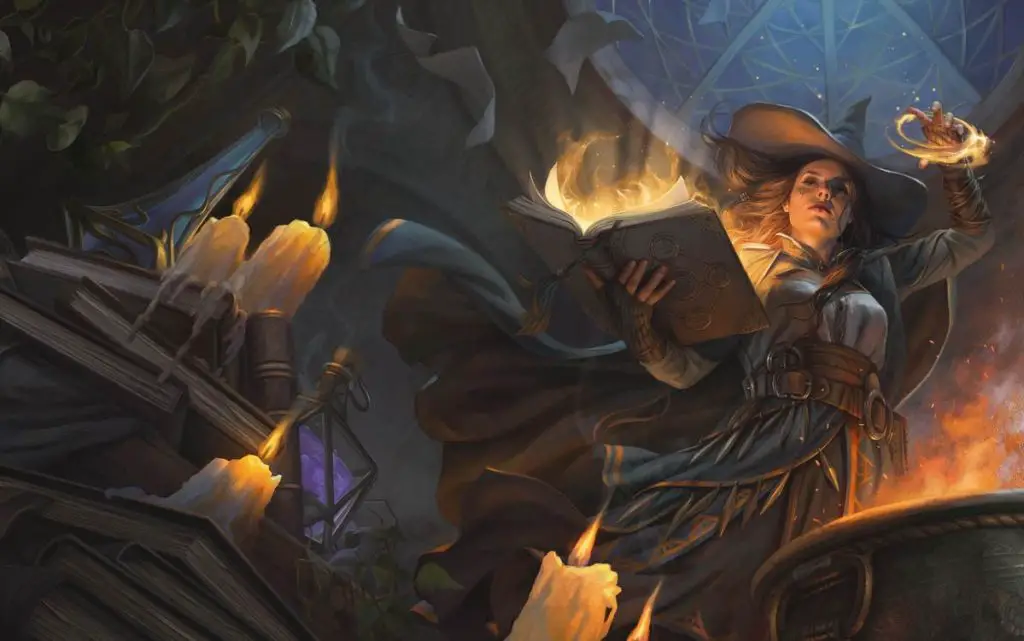
Connections
Conjuration wizards in the world of D&D 5e have a unique ability to form bonds with extraplanar beings, enabling them to summon creatures from other realms.
This aspect of their arcane prowess opens up a plethora of possibilities for both gameplay and storytelling. After all, D&D is a game of imagination and storytelling!
Building these connections often requires more than just waving a hand or uttering an incantation. It demands effort and dedication from the Conjuration Wizard.
One possible storyline could involve seeking out rare components needed to forge a powerful bond with a summoned extraplanar entity.
Imagine teaming up on a quest to find these legendary components with your fellow players. Or perhaps the components are guarded by a creature another player is seeking out to defeat to save their homeland.
A common enemy or goal is great for explaining why Conjurers will join a party.
Another intriguing avenue for storytelling lies in exploring how different cultures or factions within the game world perceive these connections forged by Conjuration Wizards.
Some societies might view such practices as dangerous meddling with forces beyond mortal comprehension, while others embrace it as a necessary means of protection or enlightenment.
Perhaps the Conjurer is being tried for witchcraft and the other PCs come to their aid forming a bond.
This dynamic can create tension and conflict within the game world, offering players and DMs opportunities to navigate complex moral dilemmas and shape the narrative through their choices.
Playing a Conjuration Wizard opens up a plethora of backstories and connections for storytelling and roleplay.
Much like the utility that this subclass provides, the only limit is your own imagination!
Is the Conjuration Wizard Good?
As with many of these subclasses in D&D the answer is very subjective and often depends on playstyle, the campaign itself, and the experience of the player and DM.
That being said, overall, the Conjuration Wizard is a very balanced subclass with very versatile capabilities.
In the case of the Conjuration Wizard, experienced players and DMs will make this wizard subclass much easier and more enjoyable to play.
The addition of more combatants on a battlefield can easily overwhelm newer DMs and players. Though, to be fair, it can even overwhelm experienced players and DMs!
If you and your DM are reasonably familiar with how D&D 5e works as a system, the Conjuration Wizard can be a lot of fun. However, it can potentially lead to certain frustrations if you and/or your DM are newer to the 5e system.
After all, there are A LOT of moving parts to keep track of once you start casting summoning spells…
But don’t let that scare you!
If you enjoy using imaginative and creative problem-solving, crowd control, summoning and transportation spells, or being the Swiss army knife of equipment and other objects, then you will enjoy playing a Conjuration Wizard!
Recommended: Ranking Every Wizard Subclass in D&D 5e!
Conclusion – Conjuration Wizard in D&D 5e
I hope you’ve found this guide to the Conjuration Wizard in D&D 5e helpful!
Whether it’s conjuring creatures and objects or teleporting yourself across the battlefield, the Conjuration Wizard offers a unique playstyle that can greatly contribute to any adventuring party or story the DM has cooked up.
With features like Minor Conjuration allowing you to create temporary items and Benign Transposition enabling strategic repositioning, the options for creative problem-solving are endless.
So, embrace your inner Conjurer and explore the vast possibilities this class has to offer. Be the Conjurer you always dreamed of!
Oh, and don’t forget to communicate with your fellow party members – establishing connections as a Conjurer can lead to powerful and surprising synergies on the battlefield.
So go forth, intrepid summoner, and let your magical prowess and imagination shine!
What are your thoughts on the Conjuration Wizard in D&D 5e? Got any great ideas for moments where conjuration magic can really shine?
Let’s chat in the comments below!



